OWASP Broken Authentication and Session Management Example
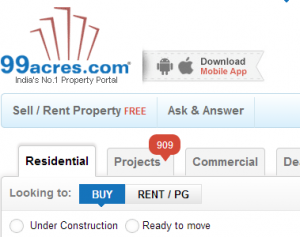
The article presents an example on one of the top OWASP vulnerability related with authentication and session management. This is termed as “Broken Authentication and Session Management”. To know more about this vulnerability and related details, visit OWASP page for broken authentication and session management. I was surfing a website, http://www.99acres.com, few days back and tried to retrieve my password using “Forgot Password” page. As I entered my username, I was amazed to see my email address shown there. I, then, tried another name such as “karthik” and following was the message:“An email has been sent to karthiksundaram@gmail.com. Please click on the link provided in the email to create …
AngularJS Coding Best Practices
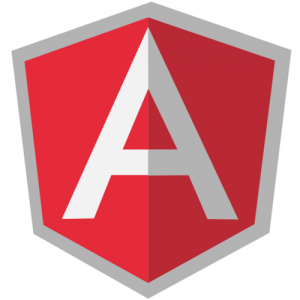
The article lists down some of the best practices that would be useful for developers while they are coding with AngularJS. These are out of my own experiences while working on AngularJS and do not warranty the entire list. I am sure there can be more to this list and thus, request my readers to suggest/comment such that they could be added to the list below. Found some of the following pages which presents a set of good practices you would want to refer. Thanks to the readers for the valuable contribution. AngularJS Style Guide App Structure Best practices Initialization One should try and place the <script> tag including …
How to Become a Technical Architect or an IT Architect?

The article presents a perspective on what is required to be done to become a Software Architect given you are currently playing the role of a software developer or a senior software developer. I have put up this blog as an answer to a related question put up by one of the vitalflux.com esteemed reader. Well, there is no right or wrong answer to this question. There can only be different perspectives. In case you have different views, please feel free to comment. Before I go on to present my perspective, check out some of the following links to understand what is Software Architecture? http://en.wikipedia.org/wiki/Software_architecture http://www.sei.cmu.edu/architecture/ http://www.ibm.com/developerworks/rational/library/feb06/eeles/ Different Designations …
AngularJS Interview Questions – Questions Set 1

The article lists down some of the interview questions that could be asked in relation with AngularJS. Most of the answers can be found on the home site, http://www.angularjs.org. Following are another set of questions that have already been published earlier. Also, feel free to take tests on this page. Interview questions – Set 2 Interview questions – Set 3 Interview questions – Set 4 Questions Set What is notion of directives in AngularJS? Ans: https://docs.angularjs.org/guide/directive Name some of the most commonly used directives? What is uage of ng-app, ng-controller, ng-view, ng-model etc? Ans: https://docs.angularjs.org/api Explain how MVC is achieved with AngularJS? What are the benefits of client-side MVC, in general? Ans: https://docs.angularjs.org/guide/controller …
AngularJS – 7 Steps for Unit Testing AngularJS Scripts with Jasmine
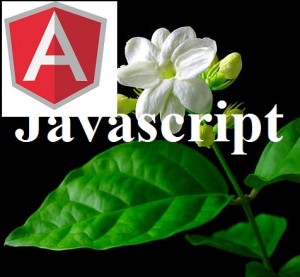
This article presents instructions on what would it take to create a setup and run unit testing for your AngularJS scripts using Jasmine framework. I shall be presenting various samples on my AngularJS website, http://hello-angularjs.appspot.com. Sorry for the typos in this article and please feel free to suggest/add any points if I missed them out. Following are key steps: Learn Jasmine Create Unit Tests using Jasmine Download and install NodeJS Download & Install Karma Configure Karma Place Scripts Appropriately Execute Tests Learn Jasmine Jasmine, one of the very popular Javascript unit testing framework, can be used for unit testing one’s AngularJS scripts. As a matter of fact, Angular …
Javascript Unit Testing using Jasmine – Code Examples
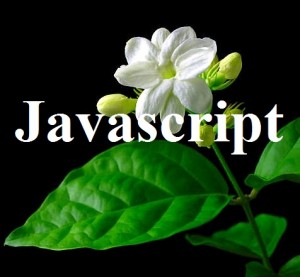
The article lists down some of the unit tests samples for testing Javascript code. The unit tests in this article tests the javascript code presented in this article, “What are Objects in Javascript?”. Before presenting code samples, lets try and understand what is Jasmine? As on the Jasmine website, it is defined as a behavior-driven development framework for testing JavaScript code. It does not depend on any other JavaScript frameworks. It does not require a DOM. And it has a clean, obvious syntax so that you can easily write tests. By what I learnt so far, I could vouch for the statement “And it has a clean, obvious syntax so that …
What are Objects in Javascript ? – Code Samples
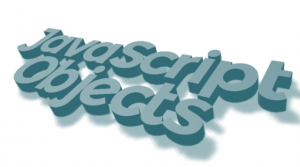
Wrote this article on Objects & Javascript for future reference. Codecademy.org is my favorite go-to-place for learning Javascript. Javascript Objects could be defined in following three manners. Objects created as Variables Objects created using new Object() Objects created using Constructor Objects created as Variables // Defining object as a variable var School = { name: “DAV Public School”, studentsCount: 600, admissionOpen: false, }; School.isAdmissionOpen = function() { return this.admissionOpen; }; School.setAdmissionStatus = function( openOrClosed ) { this.admissionOpen = openOrClosed; }; Objects created using new Object() In the example below, College is an object type. // Creating object using new Object() var College = new Object(); College.name = “IIT …
AngularJS – How to Create Single Page Application – Code Examples
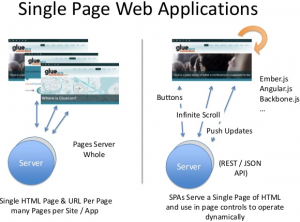
This article presents details on how one could create single page app using AngularJS. You could check out this page (http://hello-angularjs.appspot.com/spa) for demo. This page is created using AngularJS and Spring MVC. It consists of notes and sample codes along with a couple of views being loaded on the same page based on different URL routes.Following is touched upon in this article for creating SPA using AngularJS. What is Single-Page application? Routing in AngularJS – Key for SPA Code Sample – Single Page App Code Sample – Routing Some of the key AngularJS concepts that got demonstrated in this article and the related demo page are following: Routing Directives Templating …
AngularJS Key Concepts – Part 1

The article represents certain key concepts of AngularJS javascript framework. I shall be writing further articles presenting my learning as I go ahead. AngularJS is a great (so-called Super-heroic) framework if you want to build single page applications (SPA) consisting of multiple views (smaller web pages so to say). That said, it is not limited to SPAs and could be used with any kind of web applications. If you have worked in past with JQuery, you would be amazed to see the simplicity that AngularJS brings on the table with respect to DOM manipulation. Just this feature has got me on board with Angular. Modular framework: Angular is a modular …
AngularJS – Adding/Removing Table Rows Dynamically (Updated)

This article is updated to include concepts and related take-away code related to adding/removing the table rows on different Angular versions including Angular 2.* and later version (Angular 4.*, Angular 5.*) and, also, AngularJS 1.* releases. Add/Delete Table Row (Angular 2.*, Angular 4.*, Angular 5.*) The code given below demonstrate the following: Display a table consisting of one or more rows with each row representing teachers’ detail Add a teacher using a Model Window Delete a teacher This is how the screenshot of the table looks like: The code is designed as following: Teacher Class: There is a teacher class (teacher.ts) which representing teachers’ detail. The code given below represents the same: …
AngularJS Hello World Code Example
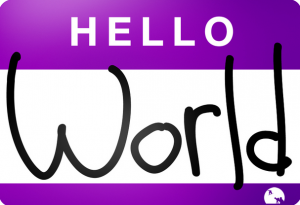
The article presents hello world code sample for AngularJS javascript framework. Following are important aspects to note while you are going through the Hello World demo and the code samples listed below. Directives ng-app, ng-controller, ng-model Template with double curly braces Step 1: Include Angular Javascript within <Head> Section Include following code within <head></head> to include Angularjs javascript file. Get the latest code such as below from Google hosted libraries page. <script src=”//ajax.googleapis.com/ajax/libs/angularjs/1.2.17/angular.min.js”></script> Step 2: Apply ng-app directive to <Html> element Apply ng-app directive to <html> element such as following. Giving name of the app is optional. It could be written as simple as <html ng-app>. This directive is used to …
Things to Learn Prior to Getting Started with AngularJS

The article represents the pre-requisites in form of topics one would want to learn to get started with AngularJS Javascript framework in a faster and effective manner, and make the learning a fulfilling experience. These are based on my own AngularJS initial experiences which was inline with the popular “deeper learning curve” associated with AngularJS. Please feel free to suggest further items if I have missed on any of the important ones. Here is the wiki page for Angular. I, primarily being the Java Developer, wanted to play with Angular and other related Javascript frameworks. Thus, I got on to the AngularJS website and started playing and soon found …
Eclipse Key Shortcuts for Greater Developers Productivity

The article presents Eclipse Key Shortcuts (for Windows) which could be used to perform most common coding tasks in a much efficient/faster and effective manner thereby enhancing overall productivity of the Java developers. Please note there are lot more key shortcuts which could be accessed from Eclipse IDE Windows/Preferences/Keys. However, I have made a mention of only those shortcuts which I found very useful in coding faster. If I missed on any shortcuts keys that you feel would be useful to be added in the list below, please give a shout. There were some useful feedbacks on reddit post from where I took some commands and added to the list …
Template Project for Spring MVC 4 & Eclipse Dynamic Web Project
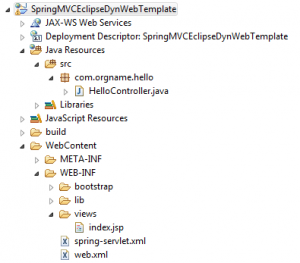
The article presents information, instructions and a downloadable eclipse dynamic web project that one could import in his/her Eclipse IDE and quickly get started with Spring MVC Hello World project. Web Application Folder Structure Following is the Eclipse dynamic web project folder structure based on which files in the template are laid out. Important Files Pay attention to some of the following important files: /WebContent/WEB-INF/web.xml: A file that cnsists of configuration related with how web requests will be handled using DispatcherServlet. /WebContent/WEB-INF/spring-servlet.xml: A file that consists of information on component model/lifecycle along with view handling. /WebContent/WEB-INF/views: A folder that consists of JSP files that acts as a view and referred …
MongoDB Commands & Concepts – Rookies Quick Reference
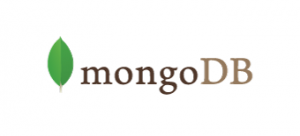
The article presents some of the basic concepts and commands which could prove useful for rookies starting with MongoDB. Key Concepts Simply speaking, MongoDB is a very popular NoSQL database with document-oriented storage. If you are a SQL developer and having challenges understanding document-oriented database, check out this page on mapping between SQL to MongoDB mapping. For a detailed introduction on MondoDB, check out this introduction page. Following are some of the key terminologies: Database Collections Document Field Primary key (_id) index JSON-styled Documents: The most important concept is document-oriented storage, and the documents are JSON-styled. Thus, one would require to learn JSON very well to do well with MongoDB …
Spring Data MongoDB Hello World with Spring MVC – Example

The article presents detailed steps on what is needed to get started with Spring Data MongoDB while you are working with Spring MVC web application. The article assumes that you have got Spring MVC application setup done. Step 1: Create Documents in MongoDB One could download MongoDB from http://www.mongodb.org/downloads page. Once downloaded, do the following to get started. Open a command prompt & goto bin folder found within MongoDB root folder. Before starting MongoDB server, create the data directory within root folder. Start the MongoDB server with command such as “mongod -dbpath <path-to-mongodb-root-folder>” Open another command prompt and goto bin folder. Execute “mongo” command and you are all set. Access …
I found it very helpful. However the differences are not too understandable for me